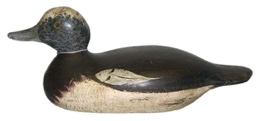see those beautiful and ornamented steel vestments enabled me to realize their scale, to appreciate their articulation and to imagine how strange it must have felt to be inside of one of them. I became much more in touch with what we were studying in school. The armor stimulated my imagination and even induced me to make a coat of mail by using several dozens of the kind of key-ring pot scouring pads that were in vogue at that time. This kind of reinforcement by museums can be extremely important. In the Exploratorium we can clearly observe that our exhibits or our graphics become much more meaningful to visitors when they remind people of things they have been studying in another environment than when they have to struggle to connect our exhibits with other experiences. It is obvious, yet often overlooked, that the more that different learning environments can be connected with each other and the more that people can bring experiences with them that bear on the experiences in a new place, the better the total learning will be. But at the outset we were not nearly as aware of this need as we have now become. Yet even with this awareness, we still find it very difficult to satisfy the needs of a diverse audience. The armor at the Metropolitan was not touchable, and it was not even demonstrated and yet it was nevertheless very involving. It managed to vividly stimulate my imagination. Years later, I remember looking at the gold jewelry from ancient Egypt in the same museum and found myself wondering how that jewelry came to be. Did the women who wore it, order it? Did merchants offer it to their queens, or was it a gift from some lover? There were no answers, but the questionings that I myself invented made me much more aware of the threads that connected that ancient culture with my own. A different kind of insight can develop while standing in front of a statue or a painting. For example, a few years ago, while looking at Clifford Still's paintings at the San Francisco Museum of Modern Art, I became fascinated with the jagged forms that Still left as shadows between broad areas of the painting. It occurred to me that there must have been some reason that he allowed those | jagged spaces to remain. When I tried to imagine where in nature such shapes occur and whence they were derived, I managed to picture overlapping shadows of people, or alternatively, the spaces between leaves of a tree, or the brushes of pine needles, or the splatter of a dark liquid on the pavement. This exercise enabled me to see more clearly than ever how deeply abstract painting could be related to nature, because there is a kind of universality to certain shapes that occur over and over again in seemingly unrelated aspects of nature. | ||
 | |||
A different kind of museum experience occurred for me at Burlington, Vermont, in a room full of decoy ducks. I had never imagined that there could be such variations in the ducks and that the art of carving them could have been such a major preoccupation. It was truly an enchanting exhibit and experience, telling me about making decoys, about the ducks themselves and also indirectly about the nature of museums. In museums repetition, and multiplicity of examples, whether of painting, decoy ducks, or the interference of light, can be provided more wonderfully than by any other medium including lectures or even books or films. I have also used museums to learn about a subject in a very systematic way. Shortly after I graduated from college, I worked in the physics department at the university in Florence and every Thursday afternoon, for about six months, went to the Uffizi Gallery. I learned and memorized the names of the painters and their styles, starting with the pre-Giotto Byzantine painters and continuing through the Titians and Tintorettos. I tried to understand the changes that were taking place. In my mind Giotto represented the pinnacle of early Italian | |||